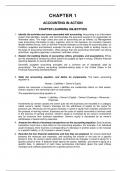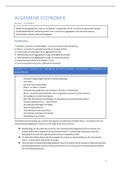Tentamen (uitwerkingen)
Test Bank For Accounting Principles 14th Edition Jerry J. Weygandt, Paul D. Kimmel, Jill E. Mitchell || All Chapters | Newest Version 2024 A+
- Vak
- Instelling
- Boek
Test Bank For Accounting Principles 14th Edition Jerry J. Weygandt, Paul D. Kimmel, Jill E. Mitchell || All Chapters | Newest Version 2024 A+ CHAPTER 1 ACCOUNTING IN ACTION CHAPTER LEARNING OBJECTIVES 1. Identify the activities and users associated with accounting. Accounting is an information ...
[Meer zien]




